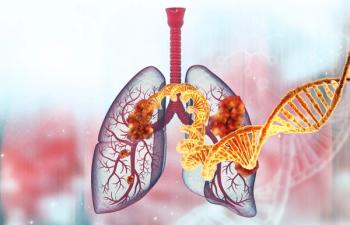
Pharmacy Practice in Focus: Oncology
- February 2022
- Volume 4
- Issue 1
Waldenström Macroglobulinemia: Common Presentations, Treatment Strategies
The uncommon disease shares features of both lymphoma and myeloma.
In a panel discussion for Pharmacy Times®, experts in the field examined multiple aspects of Waldenström macroglobulinemia (WM), including how it presents, what pharmacists should know about the disease, and how to treat it.
WM is an uncommon lymphoma, with approximately 3000 new cases reported each year in the United States.1 According to Steven P. Treon, MD, PhD, director of the Bing Center for Waldenström’s Macroglobulinemia, an attending physician for medical oncology at Dana- Farber Cancer Institute and Brigham and Women’s Hospital, and an associate professor of medicine at Harvard Medical School in Boston, Massachusetts, the disease shares features of both lymphoma and myeloma.
“As a result, the therapies that we typically use are meant to cover the clone that transcends both mature B cells and plasma cells,” Treon said during the discussion. “And so classically with chemoimmunotherapy, we’ve had to combine drug therapy that goes after lymphoma along with drug therapy that goes after myeloma so we can cover the entire clone.”
Treon also noted that WM can present several ways, with hyperviscosity syndrome being a common manifestation for patients.
“[WM] can have the IgM antibody made by tumor cells acting as autoantibodies,” Treon said. “[It] can [cause] renal failure because of the deposition of those antibodies, as well as amyloidosis. [WM] can present with classical cytopenias, and [it] can also present with bulky masses and even disease that gets into the [central nervous system (CNS)] space.”
For this reason, Treon explained, it is important to keep in mind from the pharmacy perspective that there can be multicompartment disease.
“Sometimes even the dosimetry of some of the therapies that we use, and even the therapies themselves, can be very much affected by what compartment we’re looking to treat,” he said.
Additionally, the panel discussed methods of identifying the disease. They noted that although the MYD88 mutation is carried by 95% to 97% of patients with WM, it is not unique to the disease because a small percentage of patients with marginal zone lymphoma also present with the mutation.2 Further, it is extremely common for individuals with primary CNS lymphoma to harbor a MYD88 mutation.
“What’s fairly unique to [WM] is [the] IgM protein because the IgM that’s made by the tumor cells can mediate a lot of the morbidity,” Treon said. “And as a result, when you’re thinking about therapy, you want to think about ways that you can actually turn that IgM off—how you can target the tumor cells in a way that you can get that IgM down and, many times, get it down very rapidly, especially with somebody with hyperviscosity syndrome.”
According to Treon, approximately 30% of patients with WM do not require immediate treatment. If a patient with WM is feeling well and has no symptoms of clinical significance, he said health care professionals can “watch and wait” before initiating any treatment. Guidelines from the National Comprehensive Cancer Network define points at which providers should shift to active treatment.
“It is important to recognize that a fair number of patients...meet the diagnostic criteria but are relatively asymptomatic,” Treon said during the discussion. “We tend to treat people who have very high IgM levels. If they’re above 6000 mg/dL, we’ll treat them because the data that we have when we’ve published seem to suggest that they’re more likely to get into trouble than not, and, therefore, why wait until somebody gets into trouble? Because the manifestations of hyperviscosity sometimes are irreversible, like bleeding in the retina.”
REFERENCES
1. IMBRUVICA® (ibrutinib) in Combination with Rituximab Showed Greater Efficacy Compared to Placebo Plus Rituximab in Patients with Waldenström’s Macroglobulinemia, a Rare and Incurable Form of Non-Hodgkin’s Lymphoma. Chicago, IL: Janssen Pharmaceutical Companies; June 1, 2018. Accessed January 10, 2022. https://www.jnj.com/media-center/press-releases/imbruvica-ibrutinib-in-combination-with-rituximab-showed-greater-efficacy-compared-to-placebo-plus-rituximab-in-patients-with-waldenstroms-macroglobulinemia-a-rare-and-incurable-form-of-non-hodgkins-lymphoma
2. Gachard N, Parrens M, Soubeyran I, et al. IGHV gene features and MYD88 L265P mutation separate the three marginal zone lymphoma entities and Waldenström macroglobulinemia/lymphoplasmacytic lymphomas. Leukemia. 27,183–189(2013). doi: 10.1038/leu.2012.257
Articles in this issue
almost 4 years ago
The Path to Optimizing Telehealth in a Post–COVID-19 Worldalmost 4 years ago
Using Darolutamide in Nonmetastatic Castration-Resistant Prostate Canceralmost 4 years ago
A Look at Multiple Myeloma Treatment Options in the Pipelinealmost 4 years ago
Looking Ahead: Trends in Breast Cancer Care in 2022almost 4 years ago
The Evolution of the Oncology Pharmacyalmost 4 years ago
Trends in Oncology Pharmacy in 2022almost 4 years ago
In Memoriam: Michael J. Hennessy Sr.Newsletter
Stay informed on drug updates, treatment guidelines, and pharmacy practice trends—subscribe to Pharmacy Times for weekly clinical insights.















































































































































































































